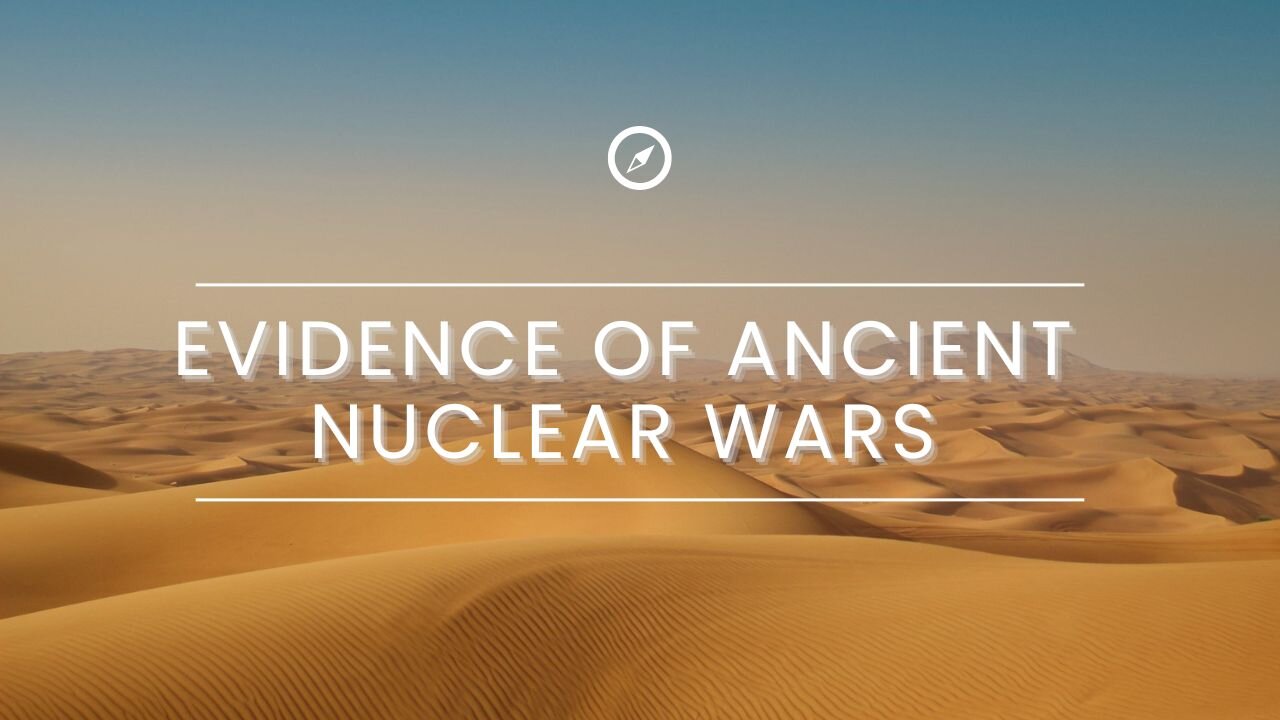Premium Only Content

Presenting Real Evidence of Ancient Nuclear Wars
-
In 1932, Patrick Clayton and a team from the Egyptian Geological Survey were driving through the dunes of the Great Sand Sea, close to the Saad Plateau in Egypt. As they drove, Clayton began to notice a curious noise emanating from under the vehicle, some sort of crunching sound from the tires entirely inconsistent with the usual noise made driving on sand.
-
Stopping to examine the situation, Clayton discovered that he and his team were driving on great sheets of greenish glass buried just under the sand; the crunching noise originating as the weight of the vehicle cracked and broke the glass into chunks beneath them.
-
Clayton and his team were puzzled – what could have caused this unusual phenomenon? A decade before the start of the Manhattan Project, they could not envision the type of force required to turn an ocean of sand into glass.
-
The dunes of Egypt, however, are far from the only place on earth where this so-called desert glass has been found.
-
In southern Iraq, a layer of glass was discovered deep in the earth during an excavation, under the Babylonian, Sumerian, and Neolithic strata, that is, in the geologic era right before cavemen.
-
Similar glass has also been found in the Gobi Desert of Mongolia and along the ancient Silk Road in China, at a site which has become known as the ‘Chinese Roswell,’ as well as in Israel, where a quarter-inch thick deposit of this glass was found spanning several hundred square feet in 1952.
-
-
 16:25
16:25
The Aquarius Bus
4 months agoSalt Lake City, Utah. 1860. Built or Found? Again, where are the people?
1.4K6 -
 LIVE
LIVE
Glenn Greenwald
1 hour agoDocumentary Exposing Repression in West Bank Wins at Oscars; Free Speech Lawyer Jenin Younes on Double Standards for Israel's Critics | SYSTEM UPDATE #416
2,036 watching -
 1:03:34
1:03:34
Donald Trump Jr.
3 hours agoZelensky Overplays His Hand, More Trump Wins, Plus Interview with Joe Bastardi | Triggered Ep.221
37.8K55 -
 LIVE
LIVE
The Jimmy Dore Show
1 hour agoPutin Offers U.S. a BETTER DEAL on Rare Earth Metals! Flu Shots Are a Proven Scam! w/ Mikki Willis
8,628 watching -
 42:47
42:47
Kimberly Guilfoyle
5 hours agoThe Trump effect: More Major Investment, Plus America First at Home & Abroad. Live w/Ned Ryun & Brett Tolman | Ep. 201
42.8K16 -
 1:29:23
1:29:23
Redacted News
3 hours agoWW3 ALERT! Europe pushes for war against Russia as Trump pushes peace and cutting off Zelensky
69.2K178 -
 LIVE
LIVE
Dr Disrespect
8 hours ago🔴LIVE - DR DISRESPECT - PUBG - 5 CHICKEN DINNERS CHALLENGE!
2,292 watching -
 57:56
57:56
Candace Show Podcast
7 hours agoHarvey Speaks: The Project Runway Production | Ep 1
61.9K39 -
 LIVE
LIVE
LFA TV
1 day agoEurope’s Relationship With America Is Over | TRUMPET DAILY 3.3.25 7PM
312 watching -
 LIVE
LIVE
Quite Frankly
5 hours ago"European Deth Pact, Blackout Data Breach, More" ft. Jason Bermas 3/3/25
1,026 watching